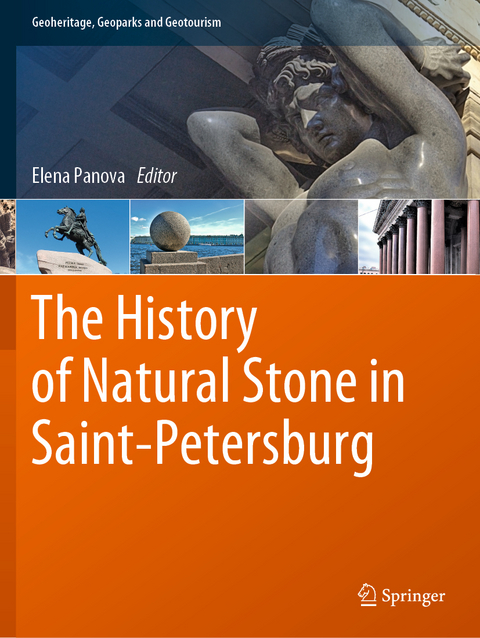
The History of Natural Stone in Saint-Petersburg
Springer International Publishing (Verlag)
978-3-031-18863-3 (ISBN)
The book introduces readers to the heritage of St. Petersburg, sharing the geological history of a unique city, a world heritage site, and part of the UNESCO list. It also explains the role of small towns and fortresses near St. Petersburg, whose stone decoration played an essential role in the city's evolution and was key in the history of neighboring cultures. The book also describes the main architectural symbols of St. Petersburg, such as the Alexander Column, the Bronze Horseman, the Peter and Paul Fortress and more. In addition to five guided tours of the city center, it offers descriptions of historic quarries, some of which are now open-air museums.
Prof. Elena Panova is Doctor of Geological and Mineralogical Sciences, Professor at the Institute of Earth Sciences of St. Petersburg State University. Over time, you begin to understand, that the stone keeps the history. The stone decoration determines the color palette of the city and its perception, the mentality of the inhabitants. The history of some stone monuments is similar to detective novels.
She is the author of more than a hundred scientific and popular publications: "The stone decoration of St. Petersburg. Travel Book", "Rapakivi granite in the architecture of St. Petersburg: a potential Global Heritage Stone from Finland and Russia", "Evaluation of condition of granite in the architectural monuments", "Changes of Granite Rapakivi under the Biofouling Influence", "On the generality of organic and inorganic", etc. A number of books prepared for young readers: "The Story of Grandfather Granite", "Seven Mountain Gnomes".
The work in this direction supported by grants from the European Union, the governments of Russia and Finland: "Effective use of natural stone in the Leningrad region and Southeastern Finland" and "History and future of natural stones in architecture - bridge between Southeastern Finland and Russia".
Panova Elena participates in the restoration of the Palmyra Triumphal Arch in Syria, explores the process of preserving petroglyphs of Khakassia, Onega and the White Sea.
Saint Petersburg - the city of stone.- Saint Petersburg - the stones city.- The Bronze Horseman and Thunder Stone - the symbol of St. Petersburg.- Peter and Paul Cathedral - the beginning of St. Petersburg.- Alexander Column - the world's largest monolith.- Natural stone in the modern St. Petersburg.- Part II. Historical quarries of natural stone.- History of stone quarrying in Virolahti area.- Serdobolsky granites from Lake Ladoga.- Granite necklace of the Karelian Isthmus.- Ruskeala marble - joyful stone of Karelia.- Part III. Natural stone in the history of two cultures.- Saimaa Canal - the history of the sea route.- Stones of Valaam and Novovalaam monasteries.- Natural Stone in church buildings.- Towns-fortresses (Vyborg, Korela).- Dragon's Teeth - Mannerheim defense lines.- Life and Stone (bridges, roads, dwellings, basements).
| Erscheinungsdatum | 07.03.2024 |
|---|---|
| Reihe/Serie | Geoheritage, Geoparks and Geotourism |
| Zusatzinfo | X, 223 p. 278 illus., 249 illus. in color. |
| Verlagsort | Cham |
| Sprache | englisch |
| Maße | 210 x 279 mm |
| Themenwelt | Naturwissenschaften ► Geowissenschaften ► Geografie / Kartografie |
| Naturwissenschaften ► Geowissenschaften ► Geologie | |
| Technik ► Architektur | |
| Schlagworte | Historical quarries • Natural Stone History • Russian geoheritage • Saint-Petersburg • Stone Heritage |
| ISBN-10 | 3-031-18863-2 / 3031188632 |
| ISBN-13 | 978-3-031-18863-3 / 9783031188633 |
| Zustand | Neuware |
| Haben Sie eine Frage zum Produkt? |
aus dem Bereich


